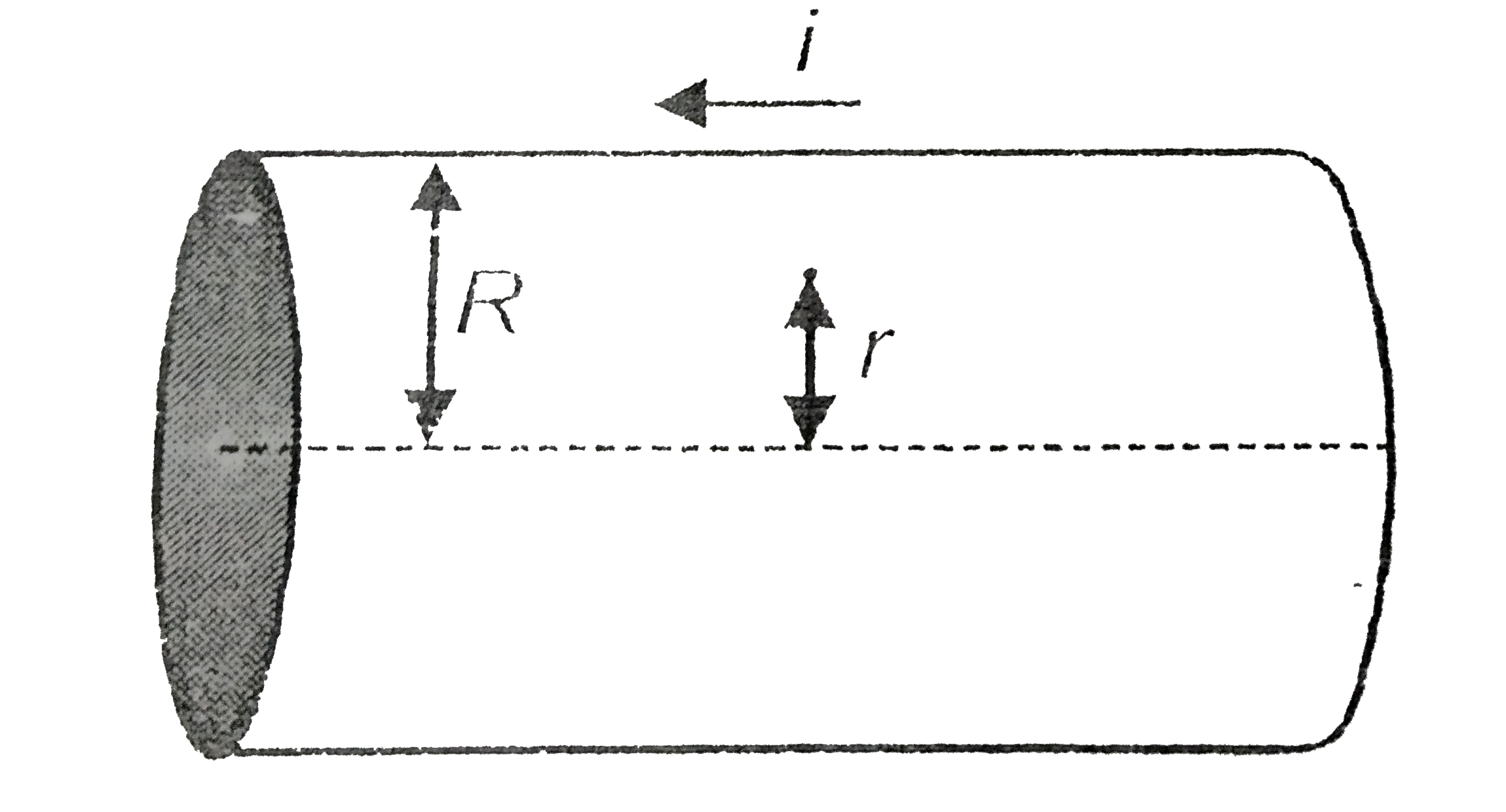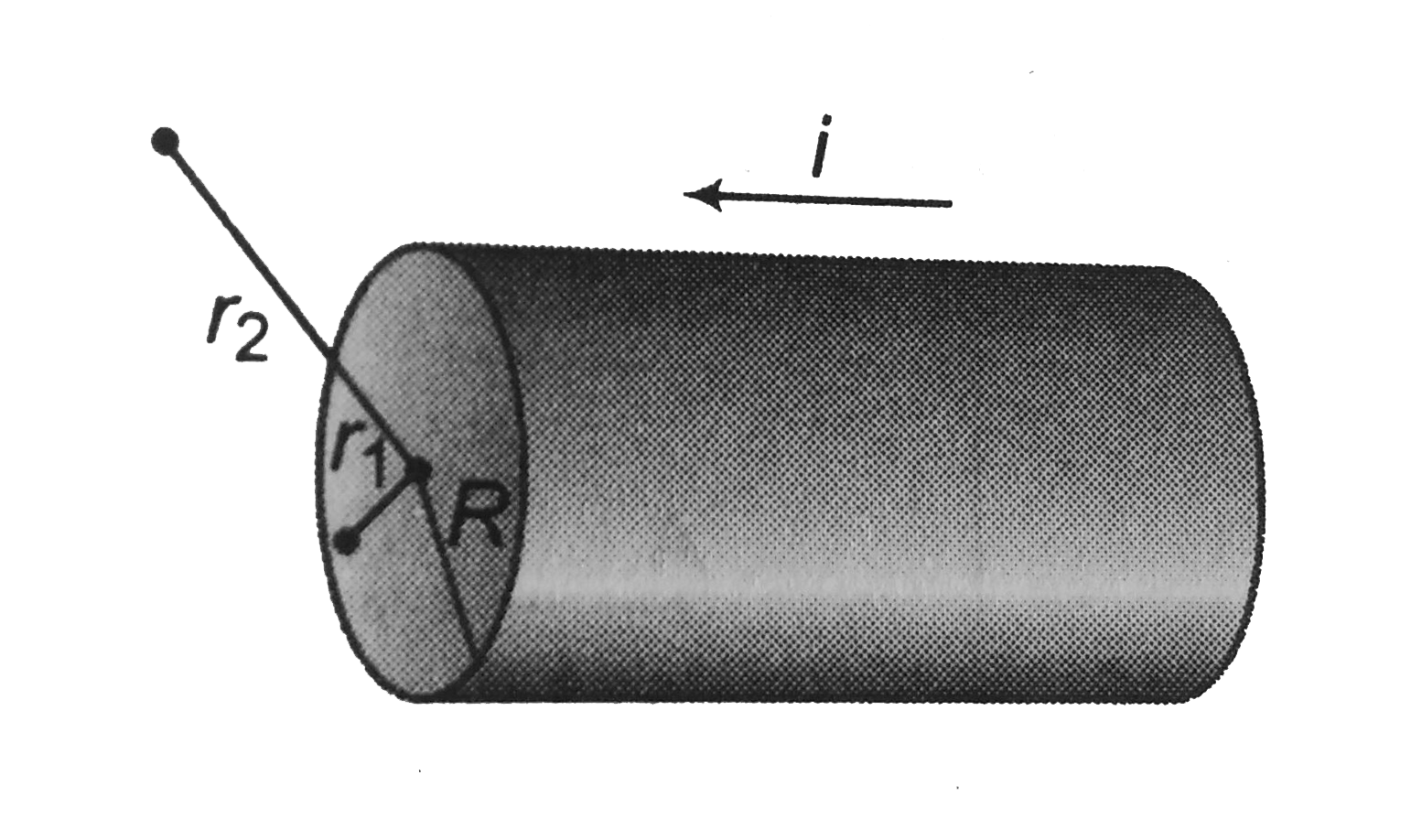The current density in a wire of radius a varies with radial distance r as J=J0r2a, where J0 is a constant. Choose the incorrect statement.
Total current passing through the cross-section of the wire isI=πJ0a32
Total current passing through the cross-section of the wire isI=3πJ0a32
The field at a distance r gt a is B=μ0J0a34r
The field at a distance r gt a is B=μ0J0a34a
The correct Answer is:B
To solve the problem regarding the current density J=J0r2a in a wire of radius a, we need to analyze the given information and determine which statement is incorrect.
1. Understanding Current Density: The current density J is defined as the current per unit area. In this case, it varies with the radial distance r from the center of the wire. The formula given is J=J0r2a.
2. Determine Total Current: To find the total current I flowing through the wire, we need to integrate the current density over the cross-sectional area of the wire. The differential area element in polar coordinates is dA=2πrdr.
I=∫a0JdA=∫a0J0r2a⋅2πrdr
3. Set Up the Integral: Substitute J into the integral:
I=∫a0J0r2a⋅2πrdr=2πJ0a∫a0r3dr
4. Calculate the Integral: The integral ∫a0r3dr can be calculated as follows:
∫a0r3dr=(r44)a0=a44
5. Substituting Back: Now substitute the result of the integral back into the expression for I:
I=2πJ0a⋅a44=πJ0a32
6. Analyzing Statements: Now, we need to analyze the statements provided in the question. We can check for the following potential statements:
- The total current is proportional to a3.
- The current density is maximum at the center of the wire.
- The current density is uniform across the cross-section.
- The current density increases with increasing radius.
Based on our calculations, we can identify the incorrect statement.
Conclusion:
The incorrect statement is that "The current density is uniform across the cross-section." This is incorrect because the current density varies with r2, meaning it is not uniform.
- The total current is proportional to a3.
- The current density is maximum at the center of the wire.
- The current density is uniform across the cross-section.
- The current density increases with increasing radius.
The incorrect statement is that "The current density is uniform across the cross-section." This is incorrect because the current density varies with r2, meaning it is not uniform.
Similar Questions
Suppose that the current density in a wire of radius a varius with r according to Kr2 where K is a constant and r is the distance from the axis of the wire. Find the magnetic field at a point at distance r form the axis when (a) r<a and (b) r>a.
View SolutionAmpere's law provides us an easy way to calculate the magnetic field due to a symmetrical distribution of current. Its mathemfield expression is ∮→B.dl=μ0Iin.
The quantity on the left hand side is known as line as integral of magnetic field over a closed Ampere's loop.
If the current density in a linear conductor of radius a varies with r according to relation J=kr2, where k is a constant and r is the distance of a point from the axis of conductor, find the magnetic field induction at a point distance r from the axis when rlta. Assume relative permeability of the conductor to be unity.
View Solution
Knowledge Check
The current density varies radical distance r as J=ar2, in a cylindrical wire of radius R. The current passing through the wire between radical distance R/3andR/2 is,
A65πaR42592B25πaR472C65πa2R32938D81πa2R4144
A long cylindrical conductor of radius R carries a current i as shown in the figure. The current density J varies across the cross-section as J=kr2, where, k is a constant. Find an expression for the magnetic field B at a distance r(<R) from the axis

View SolutionThe current density is a solid cylindrical wire a radius R, as a function of radial distance r is given by J(r)=J0(1−rR) . The total current in the radial regon r = 0 to r=R4 will be :
View SolutionA long cylidrical conductor of radius R carries a current i as shown in figure. The current desity J is a function of radius according to J=br, where b is a constant. Find an expression for the magnetic field B

a. at a distasnce r1<R and
b.at a distance r2>R, measured from the axis.
View SolutionConsider a long cylindrical wire carrying current along the axis of wire. The current distributed non-uniformly on cross section. The magnetic field B inside the wire varies with distance r from the axis as B=kr4 where k is a cosntant. The current density J varies with distance r as J=crn then the value of n is (where c is another constant).
View SolutionConsider a long cylindrical wire carrying current along the axis of wire. The current distributed non-uniformly on cross section. The magnetic field B inside the wire varies with distance r from the axis as B=kr4 where k is a cosntant. The current density J varies with distance r as J=crn then the value of n is (where c is another constant).
View SolutionThe current density across a cylindrical conductor of radius R varies in magnitude according to the equation J=J0(1−rR) where r is the distance from the central axis. Thus, the current density is a maximum J0 at that axis (r = 0) and decreases linearly to zero at the surface (r = R). Calculate the current in terms of J0 and the conductor 's cross - sectional area A=πR2.
View SolutionThe mass density of a planet of radius R varie with the distance r form its centre as ρ(r)=p0(1−r2R2). Then the graviational field is maximum at :
View Solution